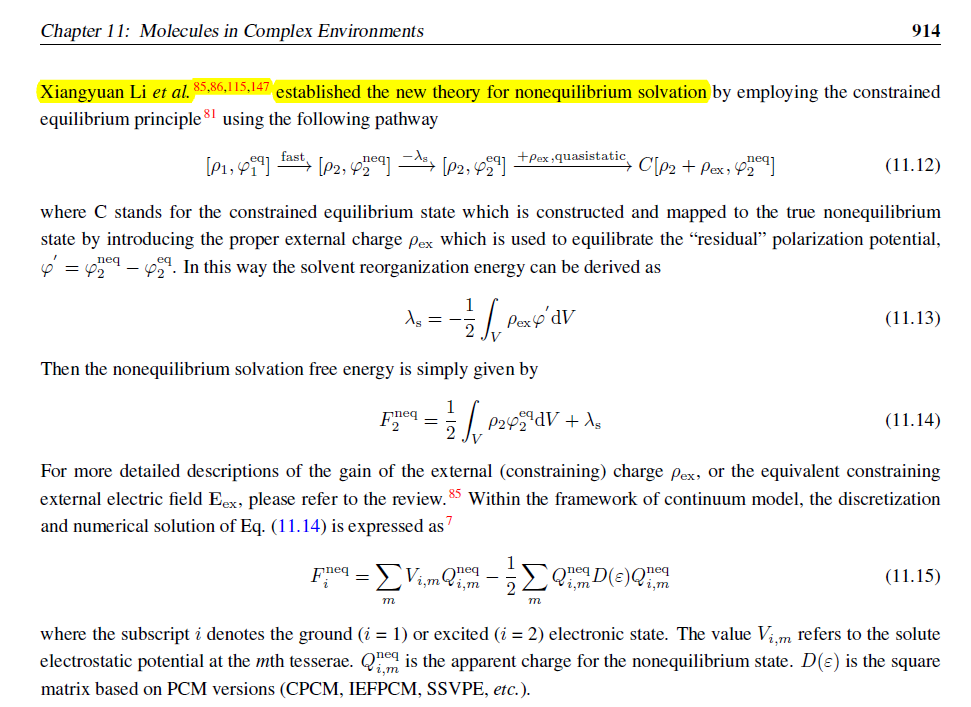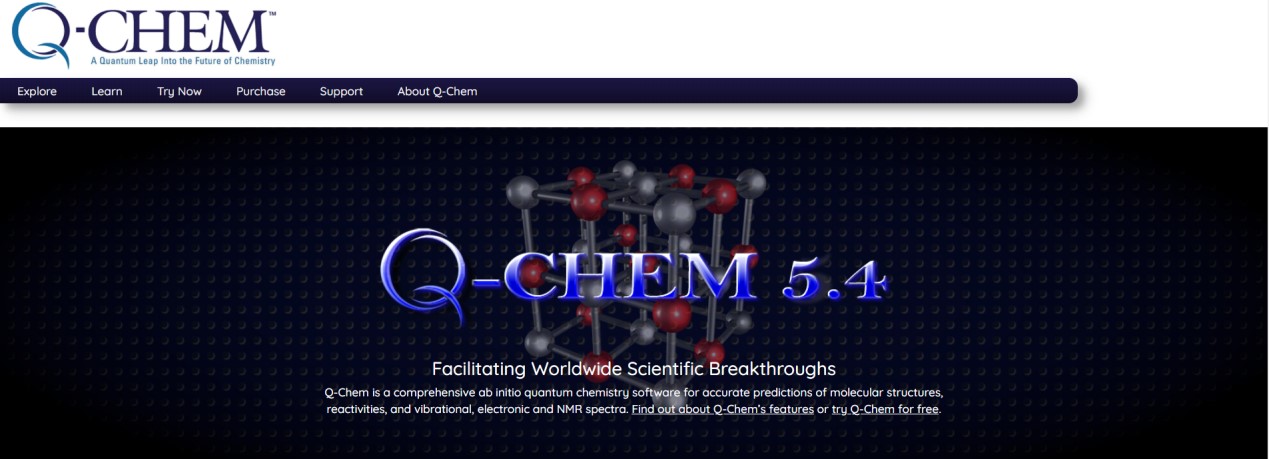The "New theory and calculation program for nonequilibrium solvation" established by Professor Xiangyuan Li's research team at the School of Chemical Engineering of Sichuan University was recently released in the commercial software package Q-Chem5.4 (https://manual.q-chem.com/5.4/topic_pcm-em.html#subsubsec:noneq-PCM). The release has provided users with the calculation code of electron absorption and emission spectra under solvent effect based on the new theory. This is a landmark achievement of the research team which has worked on original theory for more than 20 years.

Introduction of new theory of nonequilibrium solvation in Q-Chem5.4 user's manual
The solvent effect in ultrafast processes such as electron transfer and spectroscopy involves the problem of low frequency response lag of solvent, which is called non-equilibrium solvation.
Since 1998, Xiangyuan Li has undertaken the "Research on the field effect of electron transfer and the theory of long-range electron transfer", which is a major project of quantum chemistry in the Ninth Five-year Plan of the National Natural Science Foundation of China. During the research, Xiangyuan Li and Kexiang Fu, professor of the College of Physics, found that the Marcus theory for electron transfer in a solution, a Nobel Prize winner, often overestimated the solvent recombination energy as much as double the amount in practical application.
“The multipolar expansion model is based on exact formulas for the solvation energy of a point multipole in a spherical cavity, which is a crude approximation except (or perhaps even) for small molecules, and the Kirkwood-Onsager model has been largely superseded by the more general class of “apparent surface charge” SCRF solvation models, typically known as PCMs. These models improve upon the multipolar expansion method in two ways. Most importantly, they provide a much more realistic description of molecular shape, typically by constructing the “solute cavity” (i.e., the interface between the atomistic region and the dielectric continuum) from a union of atom-centered spheres, an aspect of the model that is discussed in Section 11.2.2.2. In addition, the exact electron density of the solute (rather than a multipole expansion) is used to polarize the continuum. Electrostatic interactions between the solute and the continuum manifest as an induced charge density on the cavity surface, which is discretized into point charges for practical calculations. The surface charges are determined based upon the solute’s electrostatic potential at the cavity surface, hence the surface charges and the solute wave function must be determined self-consistently.”
The research was funded by the National Natural Science Foundation of China.

